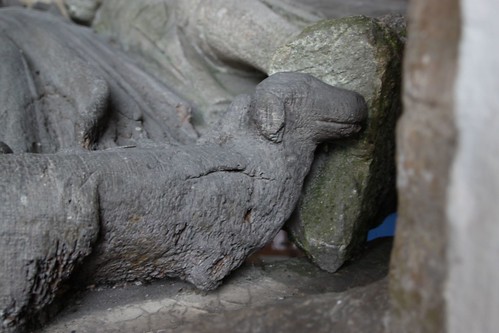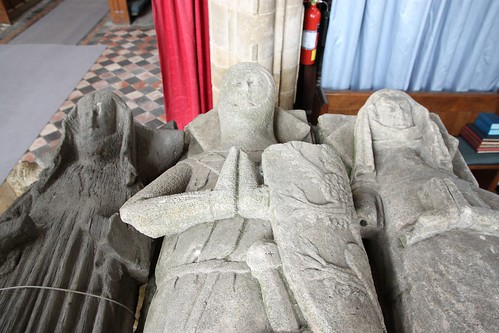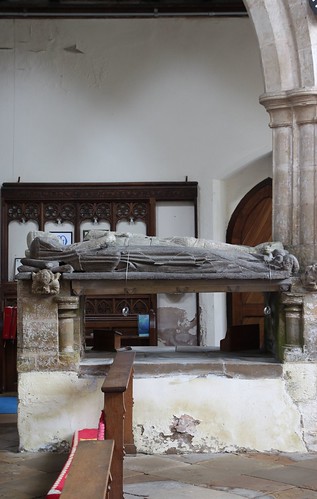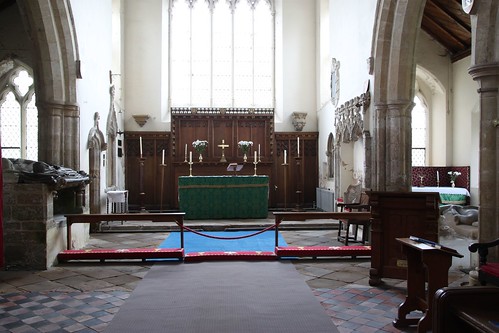A wooden effigy
This is the first of three or four articles on one church building, the church is St Michael's Laxton, in Nottinghamshire - a building of considerable interest.
On the north side of the chancel is this curious tomb, commemorating Adam de Everingham, lord of Laxton (who died in 1341) and his two wives. Adam and his first wife are portrayed, fairly conventionally, by recumbent effigies. According to J. Charles Cox the effigies are of French marble from Aubigny, so an unusual and expensive commission. Margaret, Adam’s second wife has been given a rarer thing still, a wooden recumbent effigy, presumably added at a later date. Though it is impossible to tell now due to the decay of the wood, it is probable that the effigy, like the stone effigies, was originally coloured. So the three wood have blended in together.




The three effigies are supported on a remarkable tomb chest attached to the eastern respond of the arcade. The chest isn’t a solid form, but has a large empty opening in the middle, the purpose of which is far from clear.
The tomb occupies a position of great honour within the sanctuary of the chancel and this is perhaps evidence that Adam was responsible for the reconstruction of the chancel which is early fourteenth century.
Margaret’s wooden effigy is not in good condition, for the monument has been badly neglected in the past. In the 1790s when the antiquary John Throsby visited the church for his re-working of Thoroton’s Antiquities of Nottinghamshire, he found the building in a deplorable condition. The north chancel aisle where the monument is situated was particularly bad. His description is worth repeating:
What Throsby describes was not an uncommon scene in the late eighteenth century, a time when there was a general apathy to church buildings. He then goes on to describe the state of de Everingham monument itself: 'The north cemetery (the north chancel aisle), is the foulest place I ever saw. I will attempt a description of it without the smallest exaggeration. The floor and old stones are completely covered in coals, coal-slack, cinders, firewood, straw, lime, broken bricks and stone, hassocks and floor mats torn in pieces, ladders, and old sieve, broken scuttles, and spades; brushes without handles, and handles without brushes, mortar boards and mortar, reeds, tiles, foot, broken glass, dog’s dung and...'Then he describes the condition of the tomb itself:
‘Under the arch, that leads into this place of filth, stands on old tomb almost six feet high, on which lie three figures, seemingly a knight and his two wives; but so covered with dust, that I found it difficult to sketch them’.So it is not surprise the Margaret de Everingham’s wooden effigy is looking a bit worse for wear.



Comments